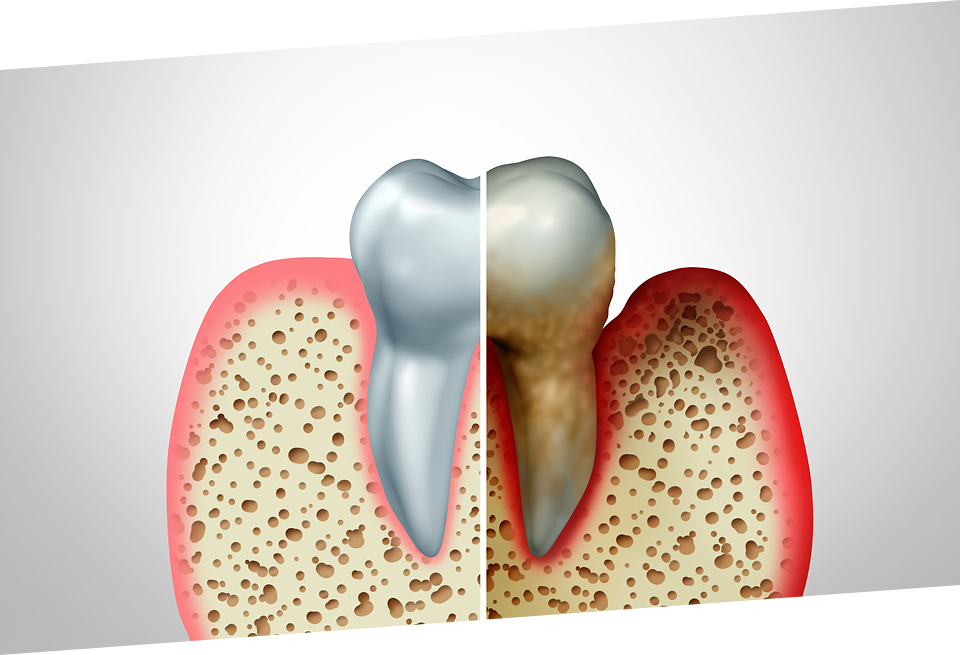
Periodontics (gum treatment)
Avoid tooth loss
Periodontal diseases can be caused by a variety of factors, the most prominent being dental plaque. Dental plaque forms a bacterial biofilm on the tooth surface; if not adequately removed from the tooth surface in close proximity to the gingiva, a host-microbial interaction gets underway.
This results in the imbalance between host and bacterial factors which can in turn result in a change from health to disease. Other local or systemic factors can result in or further progress the manifestation of periodontal disease. Other factors can include age, oral hygiene and eating-habitts. Systemic factors may include uncontrolled diabetes or tobacco smoking.
Signs and symptoms of periodontal disease: bleeding gums, gingival recession, halitosis (bad breath), mobile teeth, ill-fitting dentures and buildup of plaque and calculus.
Individual risk factors include: gender, smoking and alcohol consumption, diabetes, obesity and metabolic syndrome, osteoporosis and Vitamin D conditions, stress and genetic factors.
If left untreated, periodontitis can lead to tooth loss due to the progressive breakdown of the periodontium and the bone surrounding the tooth. Even the risk of heart disease can increase.
The goal of periodontitis therapy is long-term infection control. This ensures that the gum pockets are kept as stable as possible and that the bacterial flora is positively influenced. Although the pathological process of periodontitis cannot be reversed, it can be stopped in the long term.
Depending on the severity, we will use conservative or surgical treatment methods.
